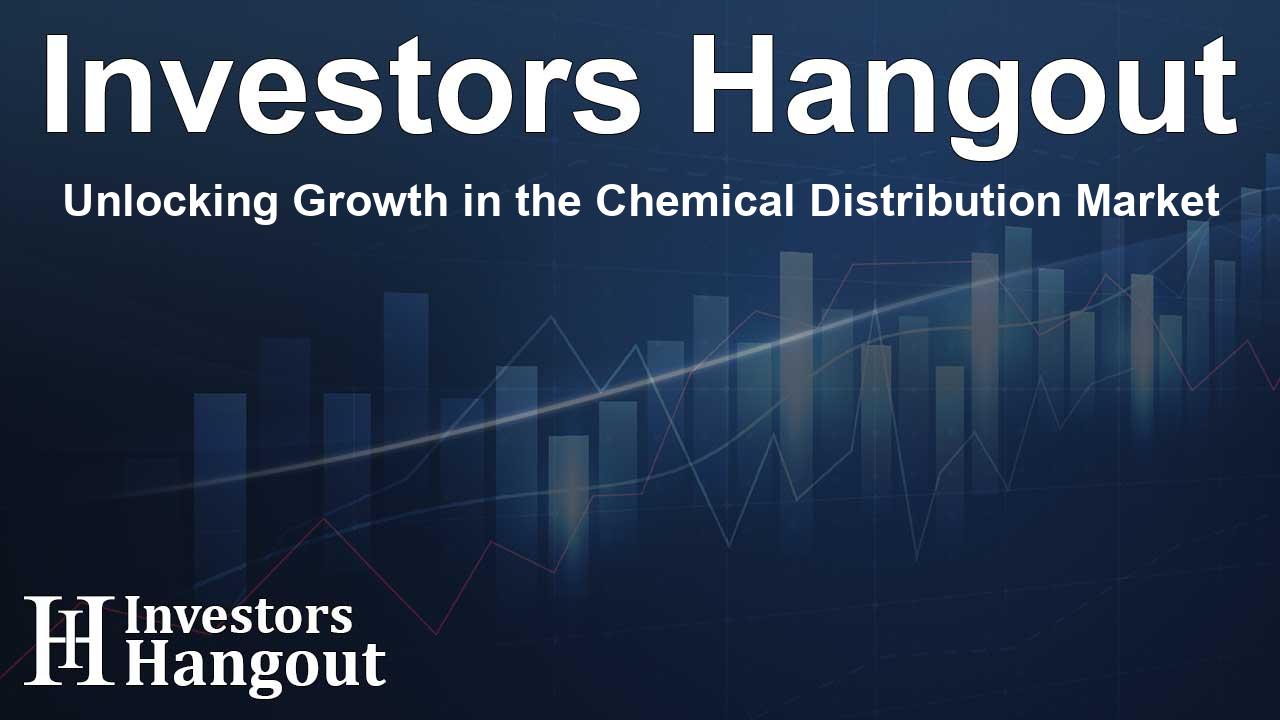Unlocking Growth in the Chemical Distribution Market

Overview of the Chemical Distribution Market
The global third party chemical distribution market is witnessing significant evolution, driven by increasing demand across various industries. The latest research indicates that this market was valued at approximately USD 297.32 billion recently and is projected to grow remarkably, reaching USD 460.92 billion by the year 2034. This growth is anticipated at a compound annual growth rate (CAGR) of around 4.5%. As specified by industry experts, the foremost players are focusing on innovation and strategic partnerships, which are crucial for navigating today's complex market landscape.
Market Dynamics and Key Drivers
One of the major factors propelling the growth of the chemical distribution market is the rising demand from end-user industries such as pharmaceuticals, agriculture, and automotive. Companies are leaning on third-party distributors to optimize their supply chains and ensure compliance with increasing regulatory demands. These distributors offer a wealth of logistical expertise that manufacturers require to navigate intricate regulations and safety protocols, particularly in emerging markets.
Increased Dependency on Third-Party Distribution
As manufacturers aim to enhance efficiency and adaptability, they increasingly rely on third-party distributors for their vast networks and operational capabilities. The intricate nature of global supply chains further reinforces the necessity of distributors, who provide vital services including inventory tracking and regulatory compliance support. With the globalization of supply chains, the role of chemical distributors has become indispensable.
Regulatory Compliance as a Game Changer
Stricter regulatory frameworks have prompted manufacturers to explore outsourcing options; this presents an opportunity for specialized distributors. Their expertise in navigating complex compliance requirements allows manufacturers to focus on core processes while ensuring that they meet the necessary local and international regulations. Distributors play a pivotal role in managing safety data documentation, ensuring that the transport and handling of hazardous chemicals are meticulously documented and regulated.
Trends Shaping the Future
Current trends underscore a movement towards sustainability within the chemical distribution sector. As eco-friendly practices become more prevalent, companies are adapting by implementing green logistics strategies. Distributors are focusing on reducing their carbon footprints through sustainable packaging solutions and energy-efficient operations.
The Drive Towards Sustainable Practices
As consumers and businesses alike prioritize sustainability, distributors who align with Environmental, Social, and Governance (ESG) criteria gain a significant competitive edge. This shift towards eco-friendly practices not only enhances their reputation but also leads to cost savings and operational efficiencies.
Market Potential in Various Regions
The chemical distribution market exhibits diverse potential across various regions including North America, Europe, and Asia-Pacific. Each region presents unique opportunities shaped by its industrial backdrop and regulatory environment. North America leads with advanced distribution systems and a robust regulatory framework, while Asia-Pacific is rapidly evolving with significant industrial activity and a burgeoning need for chemical distribution.
North America: A Hub for Innovation
In North America, established chemical distributors are enhancing their competitive edge through digital transformation and strategic partnerships. Major players focus on optimizing logistics and improving customer satisfaction, leading to stronger supplier relationships and heightened market trust.
Competitive Landscape
The competitive landscape of the chemical distribution market consists of several key players, each investing significantly in innovative solutions to differentiate their offerings. Companies are adopting digital supply chain technology and streamlined inventory management systems. This focus on efficiency and adaptability creates a competitive atmosphere among distributors as they vie for market share.
Frequently Asked Questions
What is the projected market size for the third party chemical distribution market?
The third party chemical distribution market is projected to reach USD 460.92 billion by 2034.
Which sectors are driving the demand for chemical distribution?
The sectors driving demand include pharmaceuticals, agriculture, automotive, textiles, and industrial manufacturing.
What market dynamics are impacting the chemical distribution industry?
Key dynamics include increasing regulatory compliance requirements, rising demand for specialty chemicals, and the need for improved logistics and supply chain solutions.
How important is sustainability in the chemical distribution market?
Sustainability is becoming increasingly important, as companies implement green logistics and eco-friendly practices to meet consumer expectations and regulatory standards.
Who are the key players in the chemical distribution landscape?
Key players include Brenntag, Univar Solutions, and IMCD Group, all of whom are innovating to maintain a competitive edge.
About The Author
Contact Dominic Sanders privately here. Or send an email with ATTN: Dominic Sanders as the subject to contact@investorshangout.com.
About Investors Hangout
Investors Hangout is a leading online stock forum for financial discussion and learning, offering a wide range of free tools and resources. It draws in traders of all levels, who exchange market knowledge, investigate trading tactics, and keep an eye on industry developments in real time. Featuring financial articles, stock message boards, quotes, charts, company profiles, and live news updates. Through cooperative learning and a wealth of informational resources, it helps users from novices creating their first portfolios to experts honing their techniques. Join Investors Hangout today: https://investorshangout.com/
The content of this article is based on factual, publicly available information and does not represent legal, financial, or investment advice. Investors Hangout does not offer financial advice, and the author is not a licensed financial advisor. Consult a qualified advisor before making any financial or investment decisions based on this article. This article should not be considered advice to purchase, sell, or hold any securities or other investments. If any of the material provided here is inaccurate, please contact us for corrections.
